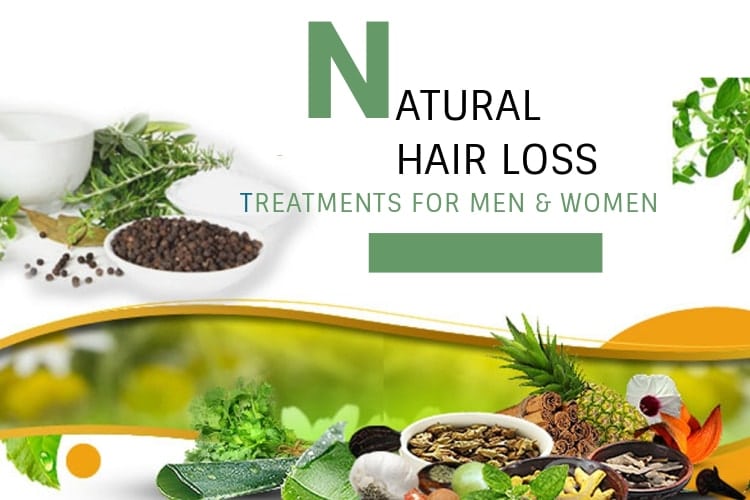
Ayurveda for Hair Loss and Hair Growth
If you’re having more than the average bad hair day and are left looking at your hairbrush in dismay, Ayurveda might just have the right answers.
In this article, you’ll learn and discover the top Ayurvedic remedies to prevent hair loss and promote hair growth.
This ancient Indian system of medicine uses a rich trove of herbs to fight “hair disease,” broadly categorized as khalitya (hair fall), palitya (premature graying), and indralupta (alopecia areata and totalis).
Table of Contents
The Root Of The Matter
According to Ayurveda, hair is a by-product of the process of bone tissue formation. Problems with the metabolism of this tissue, which depends on the digestive fire, can reflect poorly on the health of your hair. Pitta dosha, characterized by the elements of fire and water, is responsible for the digestive system and hormones that play a major role in hair health. Excess pitta can cause hair loss and premature graying. Having dehydrated vegetables, alcohol, or sour, salty, and spicy foods can increase pitta, and so can hot weather or being short-tempered. A balanced and healthy diet can go a long way in balancing pitta and keeping your hair thick and lustrous. Apart from correcting this at the root, Ayurveda also prescribes many herbs to tackle hair issues.
Kesya (Hair) Care
Well-known herbal formulations that are good for your hair include Kayyonyadi tailam and Neelibhringadi tailam, hair oils made with herbs such as bhringaraj, guduchi, and amalaki, among others. These are used daily in some parts of India and help to prevent hair loss, dandruff, and premature graying.
Apart from medicated hair oils and herbal formulations, Ayurveda also prescribes many herbs and plants individually for hair fall.
Henna (Lawsonia inermis L.)

The leaves and seeds of the henna plant are used to mitigate pitta dosha. And it’s not just Ayurveda that recognizes the benefits of henna – it was even used as a cure for hair loss in ancient Egypt. This could be because henna can switch hair follicles from the telogen phase (where the hair rests and doesn’t grow) to the anagen phase (where hair grows actively) and help retain anagenic hair follicles, thus leading to thicker hair. A hair pack with henna can reduce hair fall, condition your hair, and give it a gorgeous coppery undertone!
Aloe vera L. (Liliaceae)

Aloe Vera has proven useful in Ayurveda, as it helps keep your system clean from within. It is also an excellent ingredient for boosting scalp health, curbing hair fall, and promoting hair growth.
You Will Need
- ½ cup Pure Aloe Vera Gel
- 3 tbsp Coconut Oil
- 2 tbsp Honey
Processing Time
30 minutes
Process
- Combine all the ingredients in a bowl to get a consistent mixture.
- Apply this to your scalp and hair and let it sit for 30 minutes.
- Wash off with lukewarm water and shampoo.
How Often?
1-2 times a week.
Bitter apple (Citrullus colocynthis Schrad)

Ayurveda considers the bitter apple particularly potent for treating “indralupta,” a sudden loss of body or scalp hair due to excessive pitta. Its seeds have traditionally been used to treat hair loss and premature graying. One animal study found that an ointment containing bitter apple extracts helped in male-pattern baldness (androgenic alopecia) by inhibiting the activity of male hormones and improving the growth of hair as well as hair thickness.
Indian gooseberry (Emblica officinalis)

Amla is not only used as an ayurvedic solution for hair fall, but also an effective treatment for purifying blood and treating indigestion. This conditioning ingredient improves scalp health by tackling dandruff and scalp aggravation. When used in combination with shikakai, it acts as a natural dye that imparts a natural brown color.
You Will Need
- 5-6 tbsp Amla Powder
- 5-6 tbsp Water
Processing Time
30 minutes
Process
- In a bowl, combine the ingredients to get a thick, smooth paste.
- Section your hair and start applying this paste to your scalp and hair.
- Leave it in for 30 minutes and then wash off with shampoo.
How Often?
Twice a week.
You can also add shikakai powder to this mix by soaking amla and shikakai powder in warm water overnight. Alternatively, you can also extract Amla juice from the fruit and use the liquid for scalp and hair treatment.
Bhringaraj (Eclipta alba L. Hassk)

Translated, Bhringraj means “king of herbs.” True to its name, not only does it help promote hair growth, but it also reverses balding. It can be used to prevent premature graying. The herb is commonly available in powdered form and as an oil. It has a calming effect when applied to the scalp and helps insomniacs sleep better.
You Will Need
A handful of Bhringraj Leaves
OR
Processing Time
20 minutes
Method
- Blend the leaves with some water to get a consistent paste. If you cannot find Bhringraj leaves, mix 5-6 tablespoons of dried bhringraj powder with some water to get a thick consistent paste.
- Apply the paste to your scalp and hair and leave it in for 20 minutes.
- Wash off with shampoo.
How Often?
Twice a week.
Fenugreek seeds (Trigonella foenum graecum)

Fenugreek or methi seeds contain lecithin, a fat-like substance that promotes hair growth. By improving the dilation of blood vessels, fenugreek seeds are thought to increase blood circulation and nutrient supply to the scalp. Two tablespoons of methi seeds, soaked overnight and ground into a fine paste can also help with dandruff if applied to the scalp and left on for 30 minutes before being washed off.
Hibiscus (Hibiscus rosa-sinensis)

Hibiscus is another herb recommended by Ayurveda that has also been scientifically validated. Animal studies show that the extract of leaves and flowers of hibiscus can help with hair growth. According to the researchers, hibiscus may help hair follicles to prematurely switch from the telogen to anagen phase of hair growth. The leaves have been found to be more powerful than the flowers. Crushed leaves of hibiscus can also prevent dandruff and make your hair glossy.
Neem

For years, Neem has been used to treat skin conditions and hair loss. Regular use of neem on the scalp improves blood circulation and strengthens the roots which, in turn, promotes hair growth. Neem is also used to treat dandruff and lice. When the scalp is affected by dryness, scaliness, dandruff, eczema, psoriasis, and excessive sebum—the hair roots get damaged. This causes hair loss. Neem helps battle these conditions, soothes the scalp and promotes healthy hair growth.
You Will Need
- A handful of Neem Leaves
- 2 cups Water
Processing Time
5 minutes
Process
- Boil the neem leaves in water for 15 minutes and then set them aside to cool.
- Once the solution is cool, strain the liquid.
- Collect the neem-infused water in a jug and set it aside.
- Wash and condition your hair and pour the neem-infused water through it as a final rinse
- Do not rinse your hair any further.
How Often?
Twice a week.
Alternatively, you can make a paste of dried neem powder and water and leave it in your hair for 30 minutes before shampooing.
Dealing with hair fall is tough. But with these treatments and tips handy, you can restore your hair to its former glory in no time. Have you considered Ayurveda for hair loss? How did it help you? Tell us about your experience in the comments section below.






